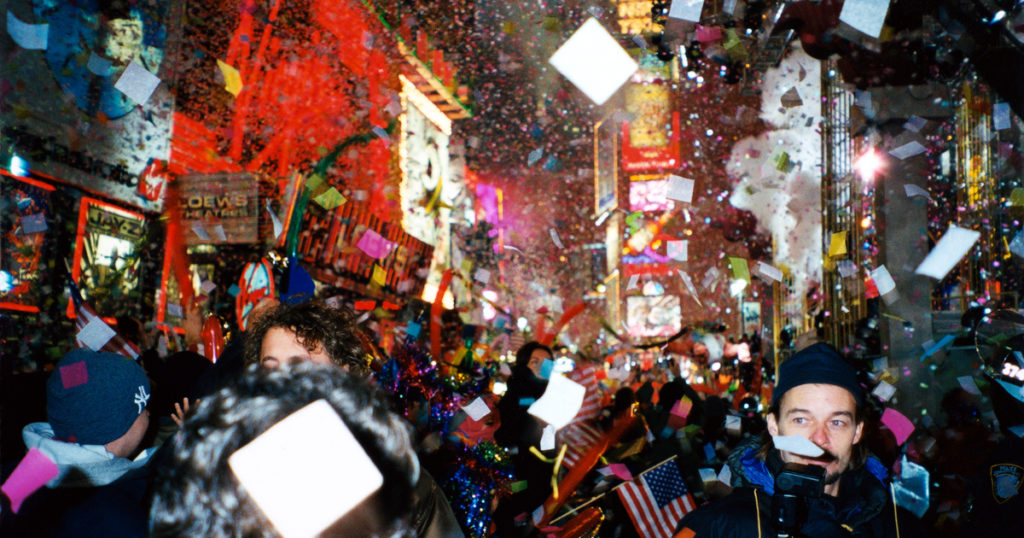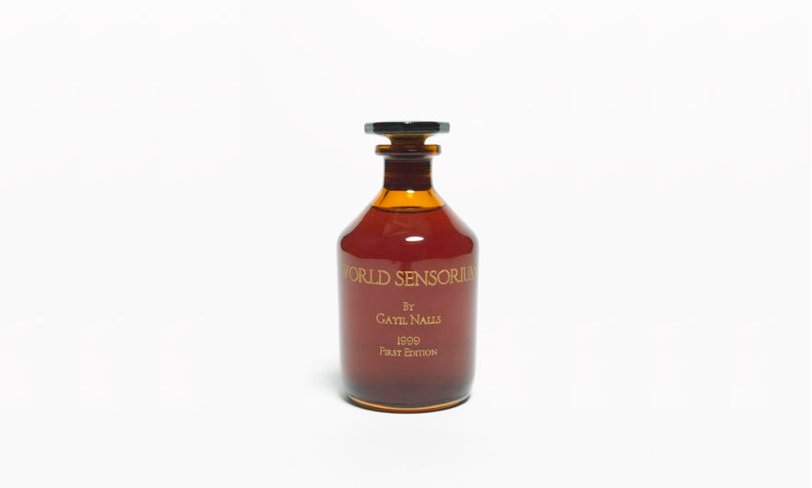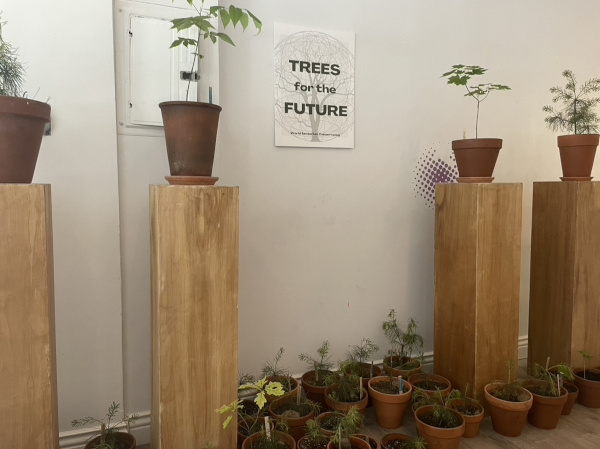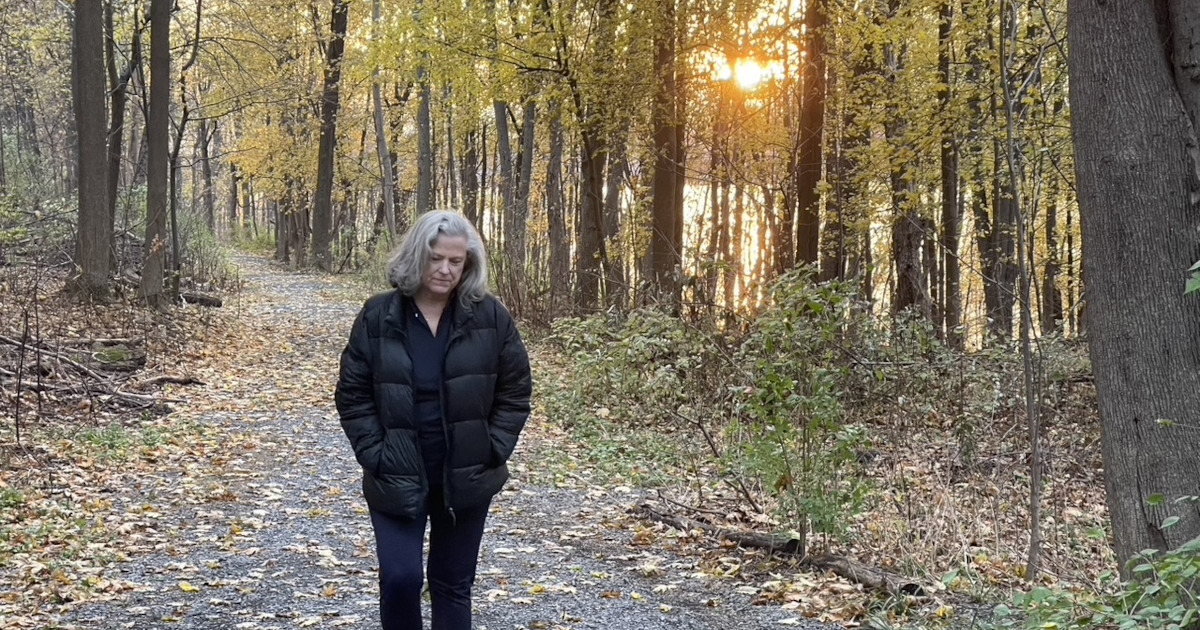Cette publication est également disponible en :
Français
You may have encountered her among the icons of the thirteenth issue of Nez: American artist, theorist and activist Gayil Nalls founded the World Sensorium Conservancy (WSC) to encourage the preservation of aromatic and medicinal plants faced with the dire consequences of global warming. Based on a complex long-running artistic endeavor, this multi-faceted project now encompasses a directory of culturally significant aromatic species, information about the dangers they will incur in the years to come, solutions to minimize our impact on the biosphere and promote conservation, donation of endemic tree seedlings, and collaborations with various global organizations and researchers. Together they work tirelessly so that, in both the near and distant future, we can still live and breathe along all the marvelous fragrant plants of our world.
How did you first become interested in smells and aromatic plants?
I don’t remember a time when my sense of smell wasn’t important to me. When I was young, I would pretend that the back porch was my sailboat and I would make believe I was traveling around the world. In each country, I would collect flowers and plants and bring them back to my ship. I would inspect them, draw them, grind them up and smell them at length before storing them in old Mason jars that my grandmother gave me. My sense of smell supplied boundless meaning and connections for me. From the outset I felt I understood the aesthetics of plant smells and scentscapes. I loved the feeling of the ephemeralness and meanings of smells in nature. It seemed like the truth and best of life.
World Sensorium started as a social olfactory sculpture based on ethnobotanical research. Can you explain the overall methodology that supported this project?
World Sensorium has been an ongoing expedition of interdisciplinary research to create and share an embodied sensory experience of the world. It is a scent comprised of aromatic materials of iconic flora chosen by each country and formulated on population percentages of each nation so that everyone is represented. The project was born in the 1980’s and required two years of research prior to a global five-year ethnobotanical study conducted on an official country-by-country basis. The data that resulted from the consensus study established the constituent botanical components of the formula of World Sensorium. Every natural scent included is thus critical to each country’s traditional and religious values, way of life, worldviews, self-expression, financial security, and even, for some, their survival. 95% of them come from flora having known medicinal properties, associated with early indigenous and traditional knowledge.
The scent has been exhibited in various forms. Can you describe them briefly?
World Sensorium made its debut at New York’s Times Square 2000 Millennium Celebration, Washington, D.C.’s Millennium Around the World gala, the Vatican’s Millennium Jubilee in Rome, a nd other events, through micro-encapsulated paperworks. For Times Square, they were dropped at midnight into a sea of 2 million people. Ten grams of World Sensorium was released when they were pulled open! The first gallery exhibition was at the Steffany Martz Gallery in New York that same year. The bottle was exhibited and the world scent diffused into the galley space with a specifically-made device. People would come in, sit and breathe. I recorded a breath-work, the sound of me breathing and played it at very low volume in the space so visitors would fall into this breathing pattern, which deepened their experience. However, I felt that people were not getting the full experience so I moved toward a more ritualized application at Cill Rialaig Arts Center in Ireland. Then, at Museum Villa Rot in Ulm and at Zagreb University in Croatia I preferred a self-application approach with conscious attention instructions.

The most cited plant in World Sensorium was jasmine (11 countries) which makes up 24% of the formula. We can thus consider that its smell is amongst the most important for humanity, since millions of people from all over the world share an emotional and/or cultural attachment to it.
Yes. This plant has actually been used for centuries to lift people in times of grief and suffering. Nicholas Culpepeer, an English botanist and physician, wrote in his 1653 book, The Complete Herbal, that grieving people should be placed in a bath of jasmine flowers that had been boiled in oil. People tend to connect through the common emotions triggered by the experience of scents which brings a cohesiveness to cultures. Jasmine, one of the most fragrant flowers on the planet, also possesses a great symbolic power – even a political power. In 2011, the Tunisian revolution, known as the “Jasmine Revolution” (the flower being a symbol of the country) had overthrown the country’s dictator president. This democratic movement was then spreading to other countries. Feeling threatened, the Chinese Communist Government outlawed the flower in that very same year, banishing Jasmine tea, canceling the International Jasmine Cultural Festival and scrubbing the internet of all references to the flower, both historical and contemporary. Anyone caught carrying a cut jasmine flower or smelling of jasmine was suddenly considered a subversive and detained. In defiance, some Chinese people risked singing traditional national songs about its perfumed blossoms.[1]Andrew Jacobs, « Catching Scent of Revolution, China Moves to Snip Jasmine », The New York Times, May 10 2011.
To create World Sensorium, you were granted the sponsorship of UNESCO. What do you think appealed to such an organization in your project?
I had been working on World Sensorium for years when I began meetings in 1997 with The United Nations Educational, Scientific and Cultural Organization (UNESCO) about the project and the need to recognize iconic plant aromatics as part of the cultural heritage of humanity. In 1998, The President’s Committee on the Arts and the Humanities[2]The PCAH was an American government committee dedicated to culture, created in 1982 and active until 2017 when Donald Trump decided not to renew it. and UNESCO endorsed the project. Federico Mayor Zaragoza, its director-general from 1987 to 1999, was a brain biochemist with a PhD in pharmacy research : he understood the importance of the bioactive compounds the inherent pharmacological properties of the plants at the heart of World Sensorium and granted it sponsorship as a “Project of Peace and Goodwill” in conjunction with the UN’s Year for a Culture of Peace when the olfactory sculpture premiered at the Times Square Millennium Celebration.

Amber Borosilicate Bottle, 4 x 2 inches, 100ml at 25% Edition of 18
© Gayil Nalls
How did this already whopping project evolve to become the World Sensorium Conservancy (WSC)?
World Sensorium has always been about environmentalism and creating a unifying consciousness. In 2016 I started compiling a dataset categorizing the World Sensorium plants status of vulnerability based on IUCN Red List,[3]International Union for Conservation of Nature’s Red List, started in 1964, is the inventory of the global conservation status of plant and animal species. It is presented in the form of an online … Continue reading which is supposed to be the most comprehensive, and found that one Pine species from the United States and the Mulanje Cedar from Malawi were critically endangered. Eleven countries’ iconic plants were endangered, and twelve countries’ plants were listed as vulnerable. Yet, 128 were not listed in the IUCN database, and I knew there were conservation issues with many of them. So the country pages on the Conservancy website[4]See https://worldsensorium.com/#countries not only explore the plants that hold the highest cultural status in each country, but also look at how climate change impacts both the plants and people.
What are the missions of the Conservancy?
Our mission is not only to educate and inform people of where plants of cultural heritage stand with biodiversity collapse and climate change, but to inspire and activate them with art, science and narrative. In order to conserve these plants, it is imperative that people fully grasp their vital function for their ecosystems, for other animals and humankind in general. After they’ve experienced World Sensorium, I ask some people: “Can you imagine a future without these aromatic plants?” It would not be just a loss to quality of life, it would be a crisis of lost sensation, perception and memory. Not to mention that as part of the plant kingdom, they feed everything that lives and produce our oxygen out of carbon dioxide. Plants gave us everything. Without them we don’t exist. We thus need everyone involved to help save them and WSC is building an effective community creating change and confronting the crisis.
Why do you think smells are a relevant and effective catalyst for involving people in plant preservation? Could it be because smells mostly emanate from living things – as Andreas Keller reminds us [5]Andreas Keller, « How We Perceive Nature Through Our Sense of Smell », Plantings, n° 14, août 2022. – and thus are bound to every life form and to the very act that keeps us alive?
People often say to me: “It’s so unique that you combine plant conservation with olfaction.” Which is interesting because from millions of years to less than a couple hundred years ago smells came primarily from plants and bacteria. Also, because we co-evolved with specific flora, different population groups have different gene sequences affecting their ability to smell different compounds. Our relationship with these smells is deeply evolutionary and meaningful. Some plants of World Sensorium have little or no aromatic recognition to people of other countries !
How do you monitor the preservation needs of plants from around the world?
There are a number of groups we monitor, including IUCN. However, because I was doing deeper research on culturally significant plants, I saw that the consequences of climate change were increasing quicker than the database. Due to long periods between reassessments of the world’s species conducted by the IUCN, its supporting commissions and external collaborators, the recorded status of species found on the list often did not reflect the current conservation status of many plants. The WSC research documents various threat levels of species that still are not in the IUCN database. Specifically, in 2018, the US had 27 different species of pine listed as of least concern, 3 species were listed as near threatened, 1 was listed as vulnerable, 3 were listed as endangered, and 3 as critically endangered. But this assessment did not reflect the current loss due to bark beetles and the wildfires they cause: indeed, when beetles attack pine trees they produce more terpenes as a defense which make the trees more flammable. By monitoring the flammable VOC compounds trees emit, the potential for fires can be identified, and this new vulnerability could be accounted for. We also monitor science journals, climate reports, conference reports, media articles, and more. Integrating the latest science research is deeply important to us. In this regard I recently attended the first International Plant Health Conference,[6]The first International Plant Health Conference, which was scheduled to take place in Helsinki from June 28 to July 1, 2021, has been canceled due to the COVID-19 outbreak, and postponed to September … Continue reading which took place in London this September. Leaders in plant health from all across the world presented on how we must manage challenges to plants and preserve biodiversity. The take-away was the reminder that plants are the foundation of life on earth and that plant health is a key factor in any strategy to achieve food security, protect the environment and biodiversity, and facilitate safe trade.
Who do you collaborate with on this enormous task?
This work is a collective effort. I have had many college students as paid part-time interns or assistants over the years. They were drawn to the WSC project by their own interests in plants, plant essential oils and olfaction. They are all multi-disciplinary thinkers and creators, and many are now emerging olfactory artists. I am curating an exhibition of their works that will take place at Olfactory Art Keller from March 23 to April 29th, 2023. Other past assistants are involved in the WSC in other ways, many are contributors for Plantings, our online journal, and our website. We also have a great Board of Advisors, including Lew Ziska, a plant physiologist and Columbia University Professor who is an authority on plants and climate change, and Stuart Firestein, a former chair of the Department of Biological Sciences at Columbia University.
Do you also organize concrete actions or do you focus on educating and promoting plant conservation?
We have been focused primarily on building and educating our constituency. Allyson Levy and Scott Serrano who founded Hortus Arboretum in Stone Ridge, New York, a few decades ago, were some of the first individuals I spoke to in 2017 about cultivating endangered landmark species. They have one of the largest collections of rare and endangered plants in the Hudson Valley and are growing many plants from World Sensorium. But to prevent more biodiversity loss, we need a global safety net beyond the network of botanical gardens. It is repetition or redundancy of growing these endangered plants and preserving their seeds that is key to the resilience of plant species and creating a strong safety net. That is why we are now working towards the launch of the World Sensorium Seedbank (WSS) initiative and looking to partner with existing seedbanks, individuals, groups, institutions and countries to make this happen as a globally cooperative effort. The advantages of seed banking are that they are relatively low-cost solutions to sustainable management. At present, there are approximately 1,000 sizable seed collections and exchanges worldwide. However, the vast majority of them maintain only food crop seeds. Out of 242 countries and territories in the WSC database, only 11 percent of them were conserved in Kew Gardens’ Seed Bank in 2018. We need to include native iconic plant species that are so important to their ecosystems and to Humankind cultures.
Can you tell me a little bit about the Trees for the Future initiative?
This campaign launched on Earth Day 2022 included an opportunity to adopt a native tree and pick it up at our two-day event at Olfactory Art Keller, in NYC. The beautiful and fragrant native White Pines (Pinus strobus) that were adopted got their start in Sullivan County, NY and came from the property of artists Daria Dorosh and John Tomlinson. All the other native tree saplings were from my upstate property. Many resources for planting and caring for trees were offered at the event. We also had talks about how we perceive nature through our sense of smell, about climate change and plant biology. Now 80 new native trees are being cared for throughout the New York area! The trees will be sequestering carbon, creating oxygen, improving water, and providing shade for many years to come.

What’s the most important thing that we, as individuals, can do to preserve fragrant flora?
Fragrant plants are mostly all seed plants, so grow them, especially threatened ones, save their seeds and give them to others to grow. Educate yourself about the conservation needs of plants and support plant conservation organizations through volunteering or donations. Help protect the environment from loss of species by keeping invasive plants in check. Do your part to cut carbon emissions. Eat more plants and less meat. Most importantly, each of us must hold ourselves accountable, live sustainably, be a role model to others, and promise the younger people in our lives that you will be part of the solution.
You also founded Plantings. What’s the aim of the platform?
What is the meaning of plant conservation in the Anthropocene? WSC asks this question often. We are at a threshold moment in time, to a level of plant and diversity loss that disrupts the fundamental workings of our planet. Plantings is our online journal initiative with an annual print publication. Currently, we produce six conservation, plant, nature-related articles, or photo essays every month that examine our environmental concerns, offer answers, motivate action, and point the way toward a more sustainable future. Our contributors come from a range of backgrounds and disciplines but all are passionate about plants, committed to conservation, have important insights, and want to help be a catalyst for positive change. We are growing a community of shared purpose and are open for submissions.
On Earth Day 2021 you launched #myplantscentmemory initiative which required people to think about aromatic plants through their personal experience and create videos around one special ‘plant scent memory’. What would be yours?
One of my plant scent memories is of the beautiful wildflower from the genus Lonicera : honeysuckle. Smelling its aroma and eating its nectar was a summer pastime of mine growing up. Pulling the stamen out the bottom tip of the trumpet-bloom and enjoying the sweet honey-like taste on my tongue one drop at a time was good simple joy. I also used to experiment and eat fruit and vanilla ice-cream with honeysuckle drops. I loved how the scent hung close in the moist air on humid days and powerfully defined the atmosphere.
- To learn more about the World Sensorium / Conservancy: worldsensorium.com
- To learn more about Gayil Nall’s artistic practice: gayilnalls.net
- Plantings, WSC’s online journal: https://worldsensorium.com/plantings/
Main visual: © Gayil Nalls
Notes
| ↑1 | Andrew Jacobs, « Catching Scent of Revolution, China Moves to Snip Jasmine », The New York Times, May 10 2011. |
|---|---|
| ↑2 | The PCAH was an American government committee dedicated to culture, created in 1982 and active until 2017 when Donald Trump decided not to renew it. |
| ↑3 | International Union for Conservation of Nature’s Red List, started in 1964, is the inventory of the global conservation status of plant and animal species. It is presented in the form of an online database. |
| ↑4 | See https://worldsensorium.com/#countries |
| ↑5 | Andreas Keller, « How We Perceive Nature Through Our Sense of Smell », Plantings, n° 14, août 2022. |
| ↑6 | The first International Plant Health Conference, which was scheduled to take place in Helsinki from June 28 to July 1, 2021, has been canceled due to the COVID-19 outbreak, and postponed to September 21-23, 2022. |








Comments